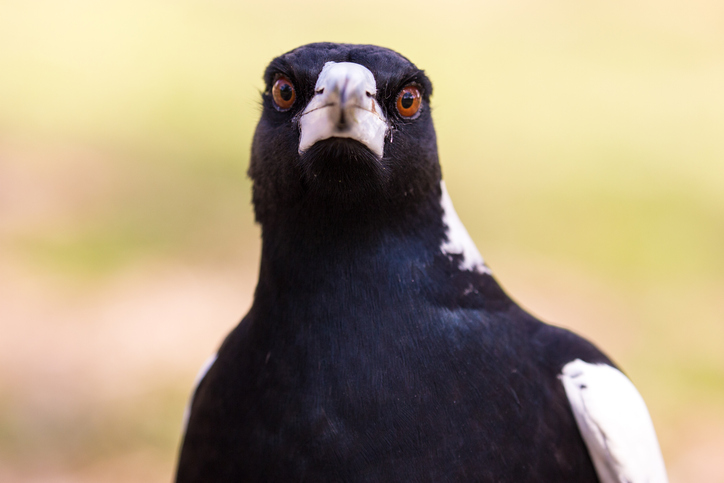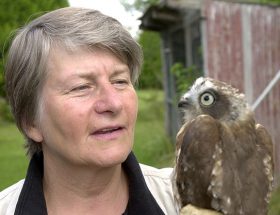
Councils across Australia are seeking ways to manage magpie swooping season after the killing of an “aggressive and uncharacteristically territorial” bird by a Sydney Council sparked a community backlash.

Since the start of 2019, there have been a spate of magpie attacks, with almost a thousand recorded incidents across the country, Queensland being the hardest hit followed by NSW and Victoria, according to the Magpie Swooping Map.
According to the map, scores of Australians have reported being attacked since the start of Spring, with reports stretching back well before July.
Gisela Kaplan, Emeritus Professor in Animal Behaviour at the University of New England, says that the unusually early breeding season was most likely triggered by a warmer than usual winter.
“In some parts of Australia, winter temperatures, especially over the last two months, have been uncharacteristically warm/high and sometimes this may serve as a trigger for breeding decisions,” she told Government News.
The advent of Spring this month was marked by a controversial decision by the Hills District Council and National Parks and Wildlife to put down a magpie that had been terrorising locals for years, highlighting the dilemma councils face when trying to manage the problem.
The Hills District Council told Government News the move was “not taken lightly” and that although council usually would usually sign post known risk areas, the large number of complaints and injuries meant council was left with no other option than to humanely euthanize the bird.
“Council attempted to relocate the magpie on a number of occasions before coming to this decision with approval from the National Parks and Wildlife Service,” a spokesperson said.
Magpie attack in the heart of the city

NSW government employee Leon Walker, 47, was a victim of the unusually early swooping season this year.
Mr Walker was waiting for a meeting outside his Sydney CBD office when he had a run-in with a magpie in May that left him requiring eye surgery.
“I was innocently standing there minding my own business when I suddenly got hit in the side of the head,” he told Government News.
“I felt like I got hit by a feather duster, thought I’d been pranked, then I started feeling a searing pain in my eye and realised it probably wasn’t a prank.
“There was a magpie a few feet away from me on the ground, so I assumed it was the culprit.”
Mr Walker ended up at the Sydney Eye Hospital where he was diagnosed with a detached cornea. He now has poor vision in the damaged eye and will have to undergo surgery.
“It’s hard to believe that something like that can happen in the heart of the city,” he said.
Councils look for swooping solutions
Professor Kaplan, who has been studying the birds for decades, says council approaches to managing nesting season will vary and she didn’t want comment specifically on the Hills District’s repsonse.
However she says it is important for councils to consider humane solutions.
“Some Councils are willing to shoot the male, which means the nestlings will eventually usually also die, then there are exemplary councils providing signs and advice in some key areas where swooping incidents have been recorded. The latter would be advisable to be adopted Australia wide,” she said.
Randwick Council is one locality looking for new, humane ways to curb magpie attacks.
Council is embarking on a public awareness campaign encouraging locals to avoid taking routes near known nesting areas or to use protection such as an umbrella, hat or helmet.
Matt Leary, Supervisor Bushland and Coast Walk at Randwick Council says council works with its internal communications team to educate the public about the best ways to respond to swooping.
“We inform residents and visitors of the “swooping” season prior to its commencement, as a preventative action and place warning signs in areas where multiple swoops may have occurred. We also encourage residents to report high swoop areas.”
This includes educating the public and raising awareness through Facebook, Instagram, the weekly newsletter, signage and local media.
“We don’t manage birds, rather we try to educate and inform residents so they can alter their own actions, if need be,” he says.
Council believes that responding to the magpies in this way could result in reduced swooping incidents in future seasons.
“We need to remember that these are not “attacks”, just birds protecting their young,” he told Government News.
“If we change how we respond to swooping magpies by avoiding problem areas for a few weeks and not giving nesting birds a reason to become territorial, we may see a reduction in swooping behaviours.”
Brisbane Council
In the centre of Queensland, Brisbane Council is also also trying to manage the birds with a public awareness campaign.
Council provides information about swooping birds such as magpies with brochures at community events with advice to help locals respond.
Information pamphlets encourage residents to avoid areas where birds are nesting during breeding season, wear a hat or carry an umbrella and wear glasses.
Council also suggests behavioural actions such as staring the birds down while walking away, as it makes them less likely to swoop.
Council also undertakes swooping bird assessments and responds appropriately by installing warning signage and covered bins to reduce scraps.
Comment below to have your say on this story.
If you have a news story or tip-off, get in touch at editorial@governmentnews.com.au.
Sign up to the Government News newsletter
It’s all very well for councils to tell people to stay away from areas where birds swoop to attack.
What if it happens right in front of your building? We have a couple of butcher birds which are becoming increasingly aggressive; they don’t even stop as you are unlocking the entrance door to the unit.
And you’re supposed to be willing to sacrifice your eye because it has been decided the birds are protected??